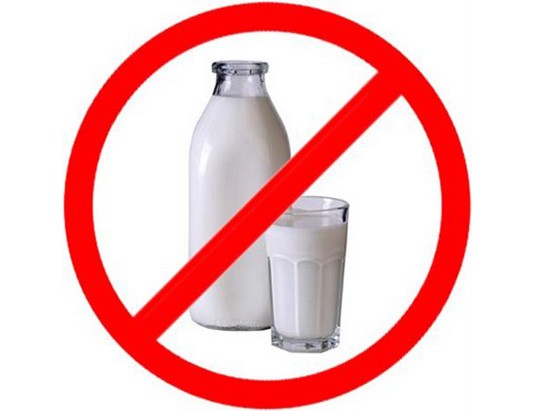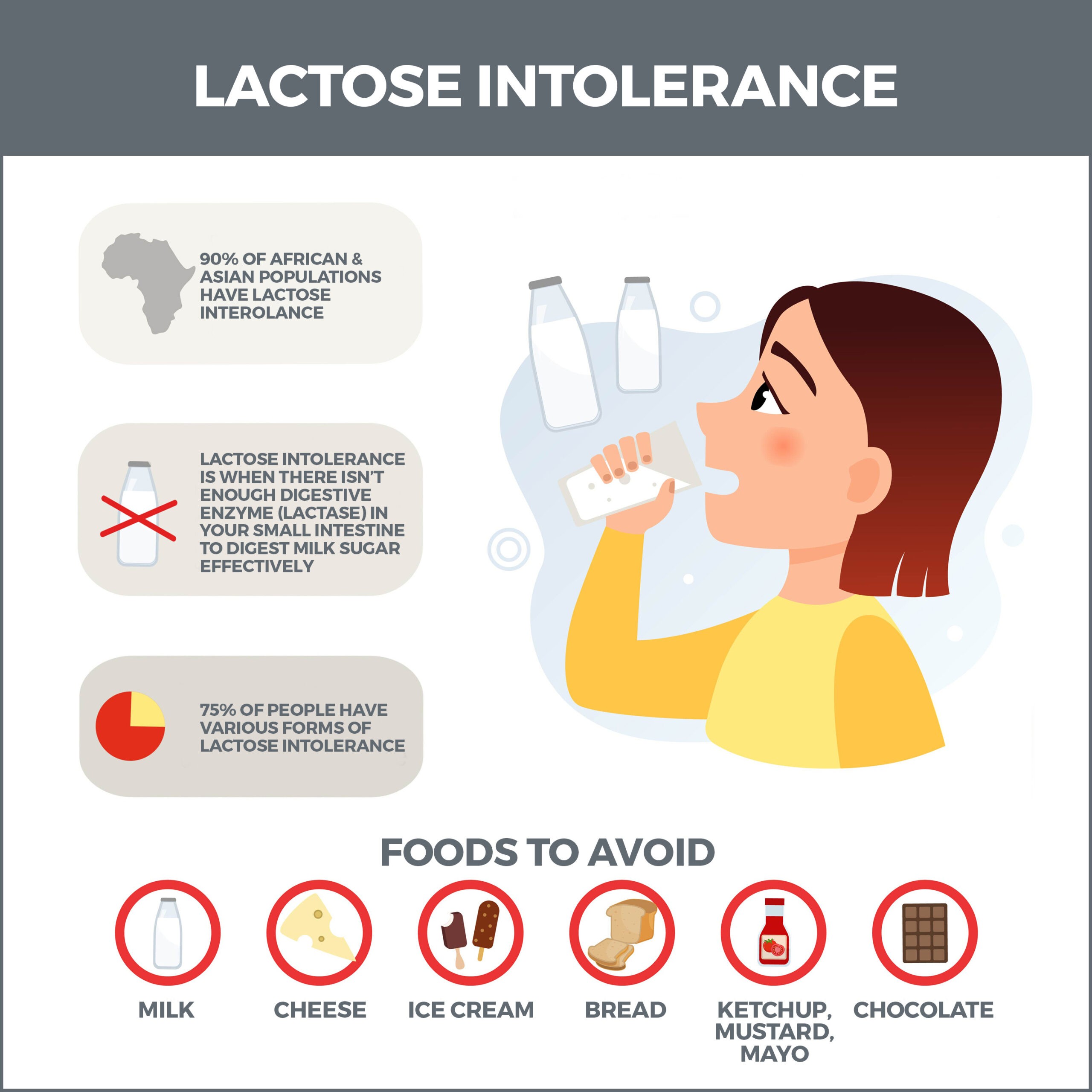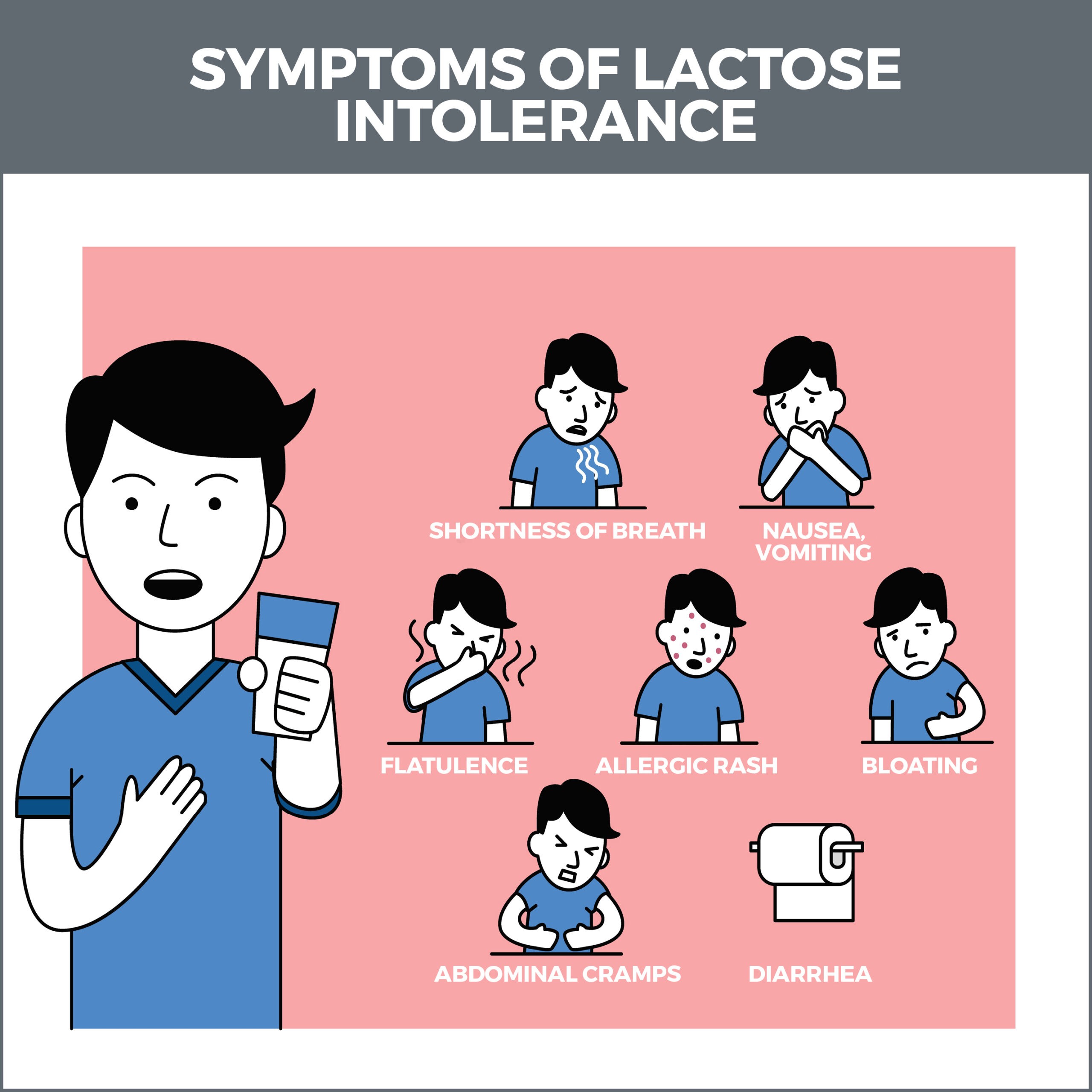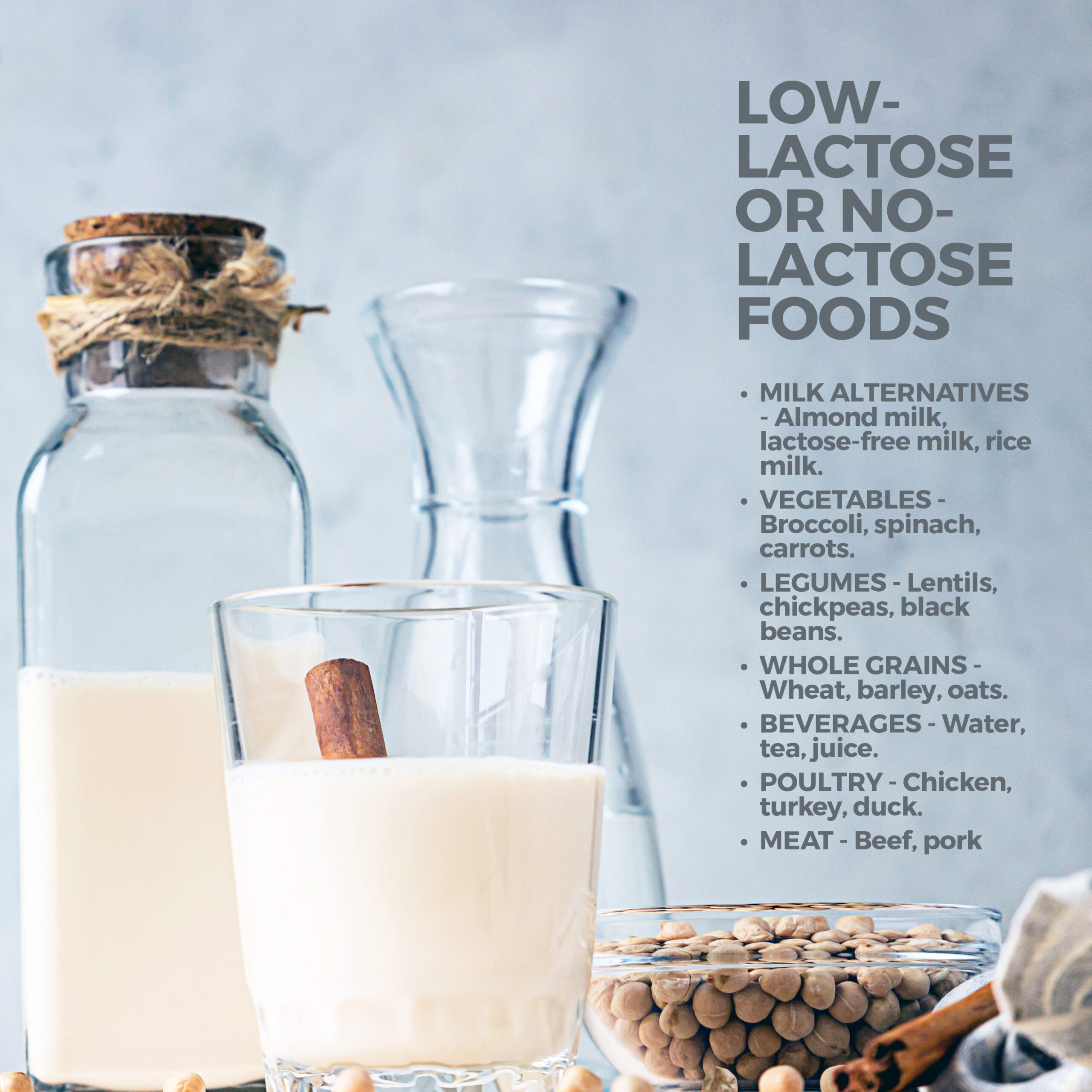
Lactose Intolerance
If you have lactose intolerance (also called lactose malabsorption), you cannot properly digest lactose – a sugar in milk and milk products such as cheese and ice cream. This condition occurs when your small intestine doesn’t produce enough of an enzyme called lactase, which is necessary for digesting lactose. When someone with lactose intolerance eats or drinks dairy products, they may experience symptoms including diarrhea, cramps, and bloating. Although it’s not life-threatening, lactose intolerance can create enough discomfort to interfere with day-to-day activities.

What Causes Lactose Intolerance?
Lactose intolerance happens when there isn’t enough digestive enzyme (lactase) in your small intestine to digest milk sugar effectively, also called lactose. Lactase transforms milk sugar into two simple sugars: glucose and galactose. Simple sugar is made of a single sugar molecule. These sugars pass through the small intestine’s lining and are absorbed into the bloodstream.
If you have a lactase deficiency, your body doesn’t produce enough lactase to break down the lactose that you ingest. About 68% of the world’s population suffers from lactose intolerance, and it can occur at any age.
Lactose intolerance is sometimes confused with a milk allergy. But a milk allergy is an immune condition, whereas lactose intolerance is a digestive condition.
Types of Lactose Intolerance
There are four types of lactose intolerance:
- Primary Lactose Intolerance – This is the most common type of lactose intolerance. With primary lactose intolerance, your lactase production declines as you age.
- Secondary Lactose Intolerance – Secondary lactose intolerance refers to an impairment of the small intestine. It can be caused by illness, injury, or surgery. It can also be triggered by celiac disease, Crohn’s disease, ulcerative colitis, intestinal infection, or gastroenteritis.
- Developmental Lactose Intolerance – This lactose intolerance occurs in some babies born prematurely before their small intestine completely develops. The condition is usually temporary and resolves on its own as the child grows.
- Congenital Lactose Intolerance – Congenital lactose intolerance is a rare, inherited disorder in newborn babies. Babies with this intolerance can’t break down the lactose in formula and breast milk.

Symptoms of Lactose Intolerance
Lactose intolerance symptoms usually start half an hour to two hours after consuming lactose products. Symptoms vary from person to person but generally include the following:
- Abdominal pain and cramping.
- Gas.
- Diarrhea.
- Nausea.
These symptoms are usually temporary.

What Are Risk Factors for Lactose Intolerance?
In the US, approximately one-third of the population is lactose-intolerant. Risk factors include:
- Being of African, Asian, Hispanic, or American Indian descent.
- Lactose-intolerant relatives.
- A history of digestive problems.
- Adults and seniors.
What Foods Contain Lactose?
Besides cow’s milk, other dairy products containing lactose include:
- Goat’s milk.
- Yogurt.
- Butter.
- Cream.
- Dried milk.
- Whey.
Take time to read food labels because lactose is often hidden in:
- Bread.
- Salad dressing.
- Processed meats.
- Chewing gum.
- Breakfast cereals.
- Potato chips (including flavors such as barbeque and dill pickle).
- Anything that’s “instant” (including soup, coffee, and mashed potatoes).
- Granola bars.
- Some medications (including antacids, birth control pills, and ibuprofen) contain lactose. This is usually not enough to cause a reaction in most people. If your lactose intolerance is severe, you should talk to your physician or pharmacist before taking a new prescription or over-the-counter medication.
Low-Lactose or No-Lactose Foods
These are a few foods that can be incorporated into a lactose-free diet (this list is not all-encompassing):
- Milk Alternatives – Almond milk, lactose-free milk, rice milk.
- Vegetables – Broccoli, spinach, carrots.
- Legumes – Lentils, chickpeas, black beans.
- Whole Grains – Wheat, barley, oats.
- Beverages – Water, tea, juice.
- Poultry – Chicken, turkey, duck.
- Meat – Beef, pork.

Other Strategies to Minimize Lactose Intolerance
Experiment with a variety of dairy products. You can use the process of elimination to remove various dairy products from your diet gradually. This trial-and-error method will help you pinpoint the ones that may adversely affect you. While you’re doing this, keep everything else the same, such as hours of sleep and amount of exercise.
- Keep a daily food journal. Keep a record of what you eat and how you feel afterward to discover whether your symptoms relate to what you eat.
- Drink milk with meals. When you drink milk with food, this slows your digestion, which may reduce your symptoms.
- Try foods with less lactose. Different foods have different amounts of lactose. For instance, soft cheeses such as ricotta, feta, and cottage cheese have a high lactose content. Hard cheeses such as cheddar and Swiss are easier to digest because most of their lactose disappears during production. Ice cream has a high fat content, so you may be able to eat it without difficulty. Yogurt is also a possibility since its bacterial cultures produce enzymes that break down lactose.
- Buy products that are reduced-lactose or lactose-free. These can be found in any supermarket and can be just as healthy as milk and other milk products.
- Use lactase-enzyme medications. These over-the-counter products contain the lactase enzyme and help you digest lactose. They come in tablet or liquid form and include Lactaid, Dairy-Ease, and Lactase.
- Consume smaller amounts of dairy. Some lactose-intolerant people can consume small amounts of lactose. For example, they can tolerate a touch of milk in their coffee but not the amount in an eight-ounce glass. Research suggests that many people who can’t tolerate lactose can actually tolerate up to 12 grams (slightly less than ½ ounce) at one time.
- Probiotics are live microorganisms that live in your gut and keep your digestive tract healthy. They are often referred to as “good” bacteria. Among other things, they can help you digest lactose. They do this by reducing the amount of lactose in fermented foods and boosting the enzyme that breaks down lactose. Probiotics are available in capsules, tablets, and gummies.
How is Lactose Intolerance Diagnosed?
Your doctor can determine if you are lactose-intolerant by performing one or more of these tests:
- Hydrogen Breath Test – During this test, you’ll be asked to drink a lactose solution. Then, your doctor will collect breath samples by having you breathe into a balloon-like bag every 15 minutes throughout your digestion process. This enables your doctor to analyze hydrogen levels in your breath while lactose travels through your digestive tract. If your body can’t digest lactose, gut bacteria breaks it down instead. This produces a greater-than-normal amount of hydrogen in your breath.
- Lactose Tolerance Test – During a lactose tolerance test (also called a milk tolerance test), you’ll drink a lactose solution. Two hours later, your doctor will take a blood sample to measure the glucose level. If your blood sugar level doesn’t rise after you drink the solution, your body isn’t properly absorbing or digesting lactose.
- Stool Acidity Test – This test is performed to diagnose lactose intolerance in young children and babies. The child is given a high-lactose drink, and then their stool sample is analyzed. If a child has normal lactose tolerance, the drink will easily be absorbed in the small intestine, and the stool will be alkaline. If there is lactose intolerance, the lactose will pass undigested into the colon, where it ferments. This creates high acidic levels in the stool, indicating lactose intolerance.
- Genetic Test – This test determines if your intolerance is hereditary.
- Small Intestinal Biopsy – This procedure determines if an underlying condition causes your symptoms. A tissue sample is removed and analyzed during a small intestinal biopsy to see how well your body processes lactose. Because this procedure is invasive and other non-invasive tests are available, this test is rarely done.
What Are Complications of Lactose Intolerance?
Severe lactose intolerance can prevent you from properly absorbing vitamin D and calcium. Your body usually gets these nutrients from milk and milk products. Without ample calcium, your bones can weaken or break more easily. Your doctor may recommend taking vitamin D and calcium supplements to counteract this.
You can also eat calcium-rich foods, including:
- Canned salmon and sardines.
- Oranges.
- Dried beans, almonds, and Brazil nuts.
- Green, leafy vegetables and broccoli.
- Fortified foods such as soy milk, fruit juices, and some cereals. A food that is fortified has added calcium.
When to See a Doctor
Tell your doctor if your symptoms don’t resolve when you eliminate lactose. This may mean that you have a more serious or underlying condition. Also, let your doctor know if you have joint pain, headaches, or persistent fatigue.
Lactose intolerance doesn’t have to put your lifestyle on hold. The team of professionals at GastroMD will help you find a treatment plan so you can enjoy eating without pain or discomfort. Contact us today! The team of professionals at GastroMD looks forward to working with you. We are one of the leading gastroenterology practices in the Tampa Bay area. We perform a host of diagnostic procedures using state-of-the-art equipment in a friendly, comfortable, and inviting atmosphere where patient care is always a top priority!



